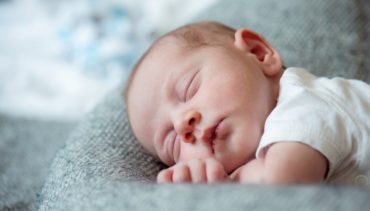
Nipple fissures: FAQ
Pregnancy is a huge milestone for every woman.
Bringing a life into the world, brings a new perspective on life, while simultaneously you’re watching your body change and grow exponentially.
You’re preparing your newborn’s room with the cutest baby crib you can find, buying his first overalls, carriage, while also receiving tacky, but oh-so-precious, nappy cakes with a grin on your face. You know it’s a new era.
Apart from the above cutsie stuff, your body is filled with hormones causing your body and mood to change throughout these nine months.
You start worrying about the appearance of stretch marks or possible gain weight, and perhaps you feel a tad more irritable than before.
What might not have crossed your mind though, is how much nipples are affected during this hormonal war.
Nipples are highly challenged before and during lactation, and they need extra tender, loving care.
If left on their own devices, breastfeeding may cause what is known as nipple fissures…
What are nipple fissures?
Nipple fissures are painful cracks on the skin of the nipple and areola.
Who is more likely to get affected and why?
- Pregnant women:
Hormonal changes cause the breast to become fuller. This may lead to overstretching of the skin around the nipple and cause soreness and irritability.
- Breastfeeding women:
If the breastfeeding position isn’t correct and the baby doesn’t latch on properly, nipples tend to become sore or even crack and bleed. Of course, in case of bleeding, you should seek medical help.
Nipple fissures often look as dry cracks, but too much moisture can also cause them. Perhaps breastfeeding lasted too long or the nipples stayed damp from baby’s saliva or milk for an extended period.
- Athletes:
Constant friction is the main cause, athletes can get sore nipples, also known as runner’s or jogger’s nipple. A study showed that this often occurs on runners who run more than 65 kilometers per week. If the top isn’t snug, but rather moves freely on the body it will cause irritation on the nipple.
How to prevent/cure them?
Using a cream that moisturizes the area round the nipple while reinforcing microcirculation, can give the nipples the elasticity they need during their inflated period during pregnancy.
When pregnant, you can apply from the 4th month and onward, when hormones are in full rage.
It can also help with the preparation of the nipples before lactation or athletes to get less friction when they train. Learning how to properly attach the baby to the nipples during breastfeeding can also minimize inflammation.
If you’re an athlete, you can also opt for moisture-wicking tops or well-fitting sport bras for women.
If the nipples are already cracked or inflamed, a regenerating nipple cream is what you need to restore nipples after breastfeeding or other triggers.
Right after you finish breastfeeding, allow the nipples to naturally dry and then apply the regenerating cream with gentle movements.
Make sure it is also designed to absorb residue milk and infant saliva while protecting against infections and mastitis.













